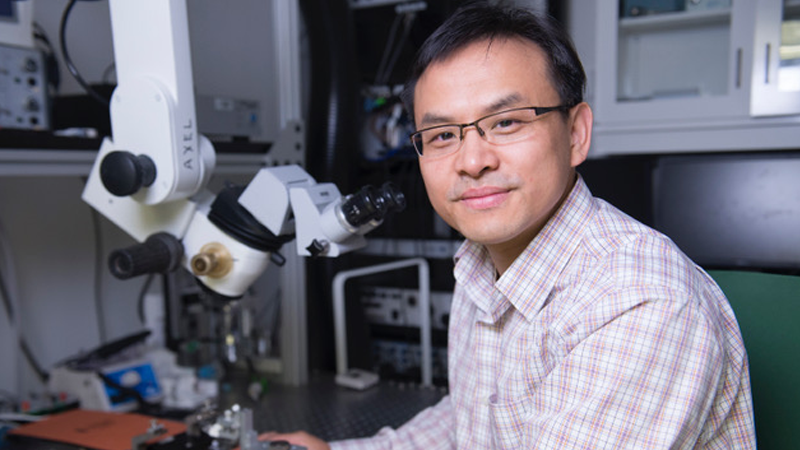Neural Engineer Qi Wang Wins NIH Grant to Study Pupil-linked Arousal
Biomedical Engineering Assistant Professor Qi Wang, who studies how the brain processes information about the outside world through the electrical activity of neurons, has won a National Institutes of Health (NIH) Research Project Grant (R01). The five-year, $2 million award will support his project to study the role of the locus coeruleus, a tiny nucleus buried deep in the brainstem, in regulating arousal in the brain that co-varies with pupil size.

Qi Wang
It is well known that arousal and attention strongly influence cognition, learning, and behavioral performance. Arousal, the level of physiological reactivity to environmental stimuli, is regulated by multiple neuromodulatory systems, including the locus coeruleus (LC), which is the principal site for brain synthesis of norepinephrine, one of the most important neurotransmitters. Wang’s project will examine the LC’s role in modulating pupil-linked arousal, using pupillometry to measure pupil diameter while simultaneously recording LC activity and behavioral performance.
“We are very happy to get such generous support from the NIH for our study,” says Wang, whose Laboratory for Neural Engineering and Control is focused on deciphering the neural code and exploring the possibilities of “writing” information into the brain through brain-machine interfaces in order to restore or enhance brain functions.
“People who suffer from neuropsychiatric disorders, including anxiety, bipolar disorder, ADHD, and autism spectrum disorders, often exhibit atypical task-evoked pupil dilation during cognitive tasks. But researchers are not sure what the underlying mechanism is that couples arousal and pupil size. While we think that the LC mediates this tight correlation, there has been little direct experimental evidence to support this hypothesis. We plan to use a combination of pupillometry, optogenetic perturbation, chronic single-unit recording, and behavioral tasks, to test this hypothesis.”
Wang’s group will address how the LC’s control of pupil size relates to LC control of arousal and behavior, and whether they can infer LC activity from pupil size and other non-invasive measures of arousal, such as cortical EEGs. “The fact that pupil size and arousal are individually influenced by many factors prevents accurate inference of LC activity from either measurement individually,” Wang explains. “But if we can establish the precise role of the LC in simultaneously modulating arousal and pupil size, then we should be able to infer LC activity from pupillometry/EEG.”
Abnormal activity in the LC has been implicated in a range of brain diseases/disorders, including depression and schizophrenia, and some of the drugs used to treat these disorders have specifically targeted the LC-norepinephrine system. A low-cost yet robust tool to estimate LC activity would enable clinicians to more accurately diagnose disorders, and optimize therapy based on a quick and quantitative measurement of LC activity. Wang hopes his study will lead to the development of new, powerful technologies that can infer LC activity using non-invasive, low-cost pupillometry methods such as Oculus and FOVE HMD and EEG techniques like Emotiv Systems.
“This will be particularly valuable in resource-limited settings,” Wang observes. He is already planning future, collaborative studies of patient populations with neuropsychiatric disorders related to the LC, including ADHD, schizophrenia, autism, and depression.
